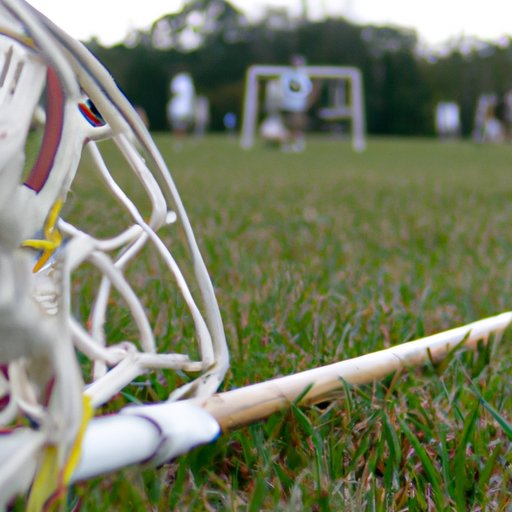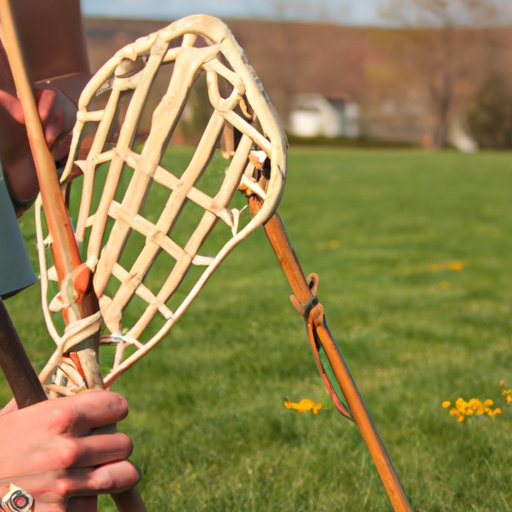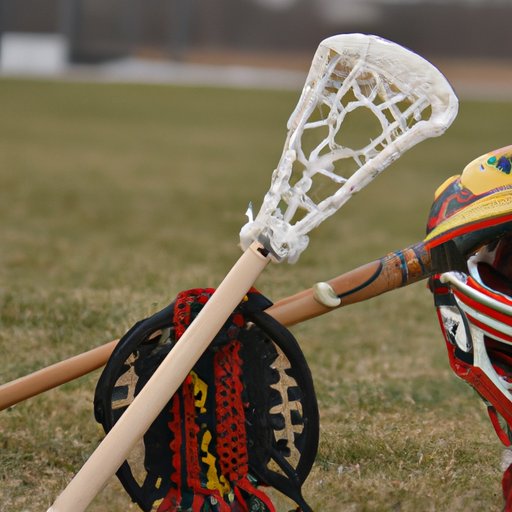Introduction
Lacrosse has become one of the most popular sports in the United States and Canada. From college campuses to professional leagues, the game is enjoyed by millions of people around the world. But when was lacrosse invented? This article will explore the history of lacrosse, tracing its origins back to its roots in North America and uncovering its earliest history.

History of Lacrosse: Exploring the Origins of a Popular Sport
The early origins of lacrosse are difficult to pinpoint, but evidence suggests that the game has been played for centuries. The game bears similarities to other traditional ball games, including those played by the Aztecs, Mayans, and Incas. However, it is widely accepted that lacrosse has its roots in the cultures of the Indigenous people of North America.
“Native Americans were playing lacrosse long before Europeans arrived in North America,” explains Dr. Thomas Vennum Jr., Senior Ethnologist at the Smithsonian Institution National Museum of the American Indian. “It was an important part of many tribes’ cultures, and the game was often used for religious ceremonies and healing rituals.”

The Beginnings of Lacrosse: Tracing its Roots Back to the First Nations
Evidence of lacrosse in North America dates back to the 16th century, when French explorers encountered the game among the Algonquin, Iroquois, and Huron peoples. Over time, the game spread throughout the continent, becoming popular among many different tribes.
Each tribe had its own origin story for the game. The Iroquois believed the game was a gift from the Creator, while the Chippewa said it was given to them by a spirit called Manabush. Other tribes attributed the invention of the game to animals or legendary figures. Regardless of the source, the game was deeply embedded in Native American culture.
Lacrosse Through Time: An Overview of the Game’s Development
Over time, the game of lacrosse evolved, becoming more organized and structured. By the 19th century, the game had begun to take on the shape of modern lacrosse. Rules were established and equipment was developed, allowing the game to be played on a larger scale.
Technology has also had a significant impact on the game. Today, lacrosse players use specialized sticks, helmets, and pads. The game is broadcast on television and streamed online. And the rise of social media has helped to spread the game’s popularity even further.
“Lacrosse has come a long way since its humble beginnings,” says Dr. Vennum. “But it still retains its connection to Native American culture and traditions.”
A Timeline of Lacrosse: Charting the Evolution of the Sport
To understand how lacrosse has changed over the years, it’s helpful to look at some of the major milestones in its history. Here are some of the most significant developments in the game’s rules and structure:
- 1867 – The National Lacrosse Association is formed in Canada, establishing the first set of official rules for the game.
- 1931 – The first men’s field lacrosse World Championship is held in London, Ontario.
- 1972 – The first women’s lacrosse World Cup is held in Edinburgh, Scotland.
- 2001 – The International Lacrosse Federation (ILF) is founded to promote the growth of lacrosse worldwide.
- 2006 – The first Under-19 Men’s Field Lacrosse World Championship is held in London, Ontario.
- 2016 – The first Under-19 Women’s Field Lacrosse World Championship is held in Guildford, England.
From Native American Ballgame to Modern Day Lacrosse: Tracing the Sport’s History
Today, lacrosse is enjoyed by players of all ages and backgrounds. Despite its popularity, the game still retains much of its cultural significance. Many Native American tribes continue to play the game and use it as an opportunity to share their culture with others.
At the same time, the game has adapted to meet the demands of the modern world. Professional leagues have been established, and new technologies have allowed the game to reach wider audiences. As lacrosse continues to evolve, it will be interesting to see how the game changes in the years to come.

Discovering the Ancient Origins of Lacrosse: Uncovering its Early History
Despite its long history, the exact origins of lacrosse remain a mystery. Archaeological evidence suggests that the game has been played for centuries, but there is no definitive answer as to where it originated. Various Native American tribes have stories about the game’s creation, and some scholars believe it may have been influenced by ball games from other parts of the world.
Regardless of the source, lacrosse is an important part of North American history. The game has been passed down through generations, and its legacy lives on today in the form of a popular sport.
Conclusion
Lacrosse is a unique and fascinating sport with a rich history. From its ancient roots in North America to its emergence as a modern game, lacrosse has evolved over the centuries. The game has been influenced by Native American culture and adapted to meet the demands of the modern world. As we continue to explore the history of lacrosse, we can gain a better understanding of this beloved sport and its place in our culture.
(Note: Is this article not meeting your expectations? Do you have knowledge or insights to share? Unlock new opportunities and expand your reach by joining our authors team. Click Registration to join us and share your expertise with our readers.)
